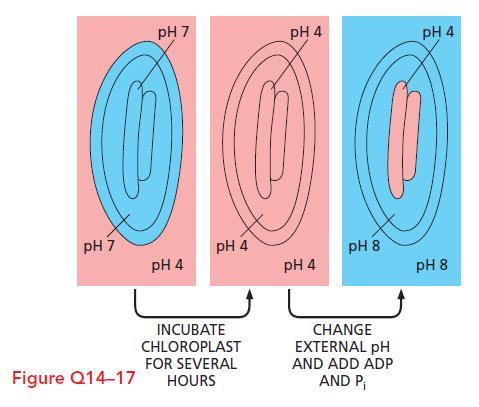In an insightful experiment performed in the 1960s, chloroplasts were first soaked in an acidic solution at
Question:
In an insightful experiment performed in the 1960s, chloroplasts were first soaked in an acidic solution at pH 4, so that the stroma and thylakoid space became acidified (Figure Q14–17). They were then transferred to a basic solution (pH 8). This quickly increased the pH of the stroma to 8, while the thylakoid space temporarily remained at pH 4. A burst of ATP synthesis was observed, and the pH difference between the thylakoid and the stroma then disappeared.
A. Explain why these conditions lead to ATP synthesis.
B. Is light needed for the experiment to work?
C. What would happen if the solutions were switched, so that the first incubation is in the pH 8 solution and the second one in the pH 4 solution?
D. Does the experiment support or question the chemiosmotic model? Explain your answers.
Step by Step Answer:

Essential Cell Biology
ISBN: 9780393680362
5th Edition
Authors: Bruce Alberts, Karen Hopkin, Alexander Johnson, David Morgan, Martin Raff, Keith Roberts, Peter Walter





